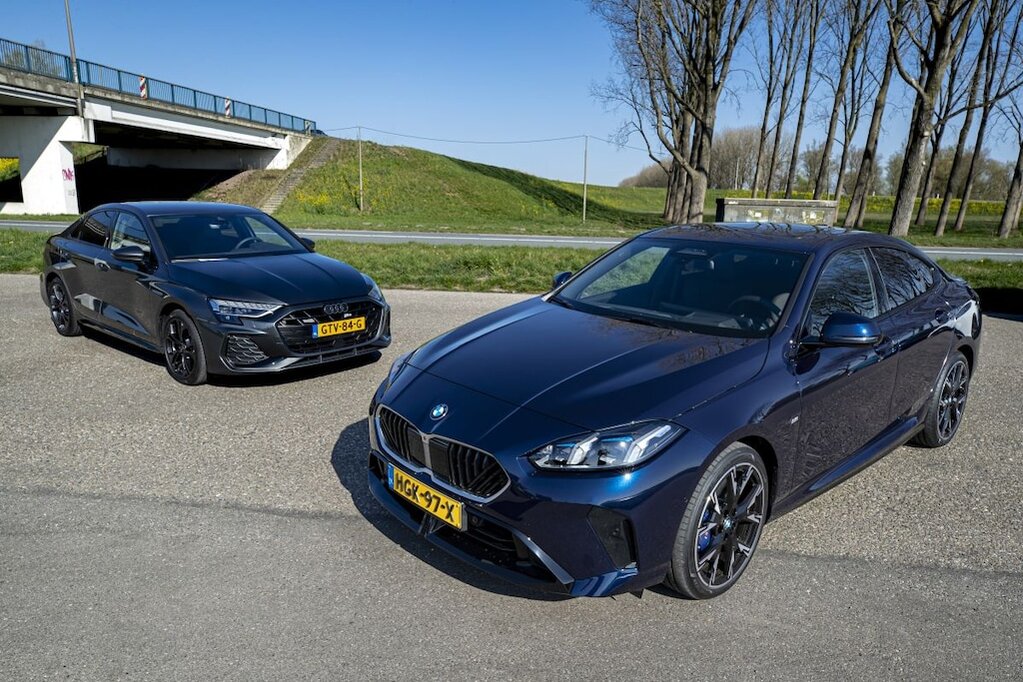
In the Netherlands, a hatchback is standard in the C-segment. Elsewhere in the world, sedans sell well in this segment, but they are unsaleable here. Unless you turn it into a Limousine, like Audi. Or, even more exotic, a four-door coupe like BMW is trying with the new 2 Series Gran Coupe.
It almost seems like a matter of principle for us West Europeans: in the C-segment it simply has to be a hatchback. No messing around with a separate trunk, but just a large opening and a practical luggage space. In many countries a sedan sells quite well, but in our country that kind of model is often unsaleable. You hardly ever see an Opel Astra or Ford Focus here as a four-door with a trunk.
The concept has a slightly better chance of success with the premium brands. The previous generation A3 sold remarkably well as a sedan, pardon: Limousine. Mercedes and BMW are taking a different approach. Mercedes has had an A-Class sedan in its range, but a four-door C-segmenter at the brand with the star is usually the CLA, a four-door coupe. BMW has never supplied a traditional sedan in this segment, but has been trying for a few years with the 2 Series Gran Coupe. In principle, it is a direct competitor for the CLA, but it will soon get a completely new successor and so we end up with Audi after all. Incidentally, BMW claims that the 2 Series Gran Coupe is also ‘all new’. But in fact, this is a major facelift of the previous edition, as it did earlier with the 1 Series.
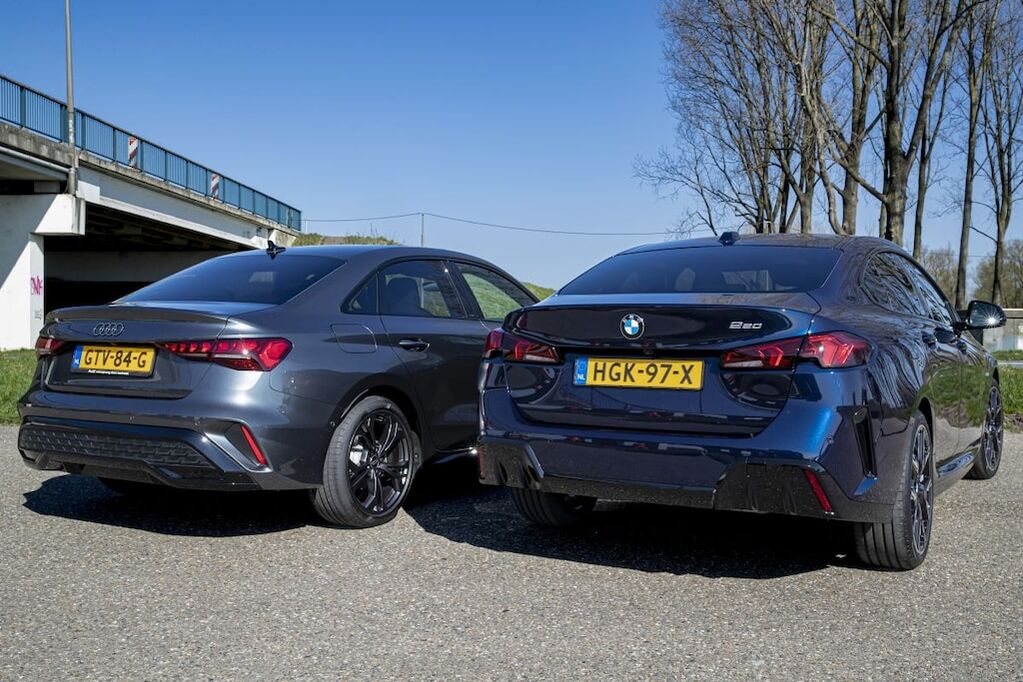
Sedan Or Four-Door Coupe is Both Not Convenient
Open the tailgate of the 2 Series Gran Coupe and you sincerely wonder why people would prefer this over a 1 Series. The opening is small and the height of the luggage space is limited, so you will soon get stuck with larger items. You really have to choose such a model because you think it is beautiful, although we wonder how you came to that conclusion. The passengers in the back seat will certainly not thank you for the choice. Getting in quickly becomes an exercise in flexibility due to the small doors and once you arrive on the seat it feels like a straitjacket.
At the very front we see the same changes that we saw earlier in the 1 Series. This means that almost all physical buttons have been cut back, including the fine iDrive controller. Instead, you now control almost everything via a reasonably modest touchscreen. It works, but BMW has really taken steps backwards in this area in recent years. There is a lot in it and although you can in principle add a number of shortcuts, you can only do that if you register with your BMW ID.

Audi A3
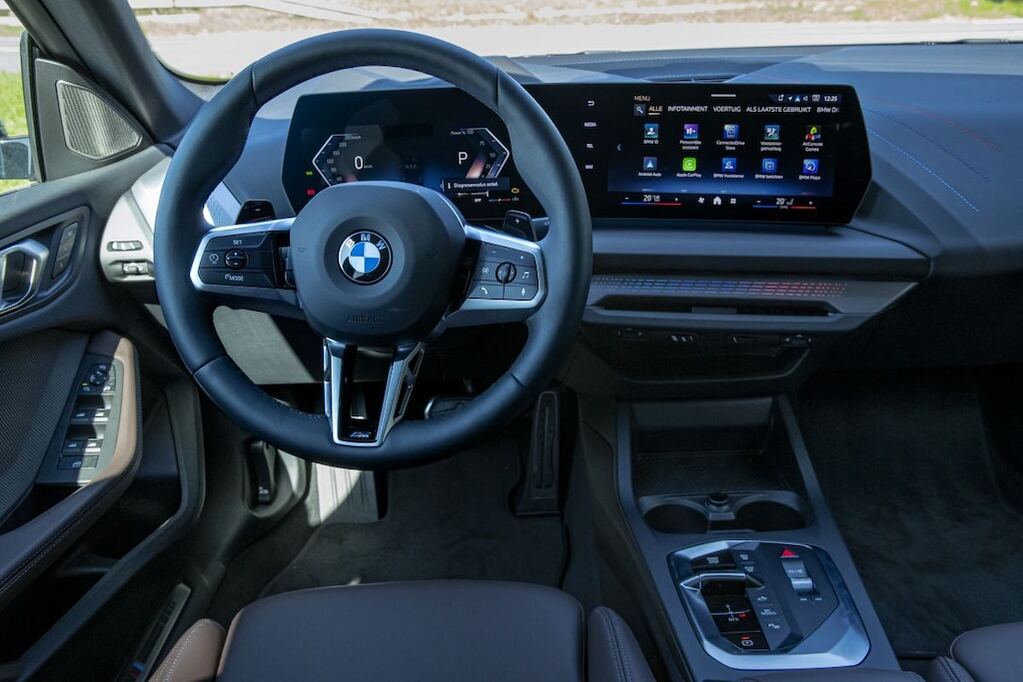
BMW 2-series Gran Coupe
Paying with your data is already bad if the service behind it is ‘free’, but this 2 Series is anything but. The idea is downright debatable, because you can expect a car to offer all functionality without the driver having to provide data for it. And if we’re going to complain anyway, the screen with the different modes is also a bit confusing. We understand Sport, but what modes like ‘Expressive’ and ‘Silent’ have to do with driving is a mystery to us. In addition, there is an adaptive chassis under the test car, but how you should adjust it is not entirely clear. In short: it’s fun for the show, but ergonomically we can point out a few points for improvement.
Now the Audi A3 is not flawless either, but ergonomically that car is much easier to understand. More physical buttons, less fairground on the digital instrumentation and an infotainment system that has fewer layers. You also have more interior space. Even in the front. Where longer drivers in the 2 Series almost touch the A-pillar, that does not happen in the A3 in the slightest. In the back seat, the A3 certainly does not offer the space that we associate with a Limousine, but you can sit there quite reasonably as an average Dutchman. The trunk has a capacity of 425 liters, 65 liters more than in the BMW. The access is also somewhat larger, so all in all the Audi wins when it comes to practical usability.
Audi Goes for Four Cylinders, BMW for Three
Both brands have also approached the powertrains in a different way, although they are both 1.5-liter mild hybrids. At Audi it is the well-known 1.5-liter TFSI four-cylinder with cylinder deactivation and mild-hybrid technology. The latter means that the starter motor not only starts the 1.5, but also helps it a little with driving. It is only 12 hp, but especially in the city at low revs it is a pleasant helping hand.
At a constant pace, the middle two cylinders remain out of operation to save fuel and as soon as you release the accelerator, the S-Tronic automatic transmission with double clutch disengages and the engine shuts off. You notice the effect at the pump, the WLTP value proves to be more than achievable in practice and if you don’t do too crazy things, a consumption of 1 in 20 is still possible. The TFSI also behaves neatly along the way. You only hear it when you really go all out and you almost never do that, because thanks to 250 Nm between 1,500 and 3,000 rpm, the best of the engine is at the bottom. The A3 is well equipped with it, although the performance is certainly not thrilling. The S-Tronic does its job nice and smoothly and in peace and quiet.
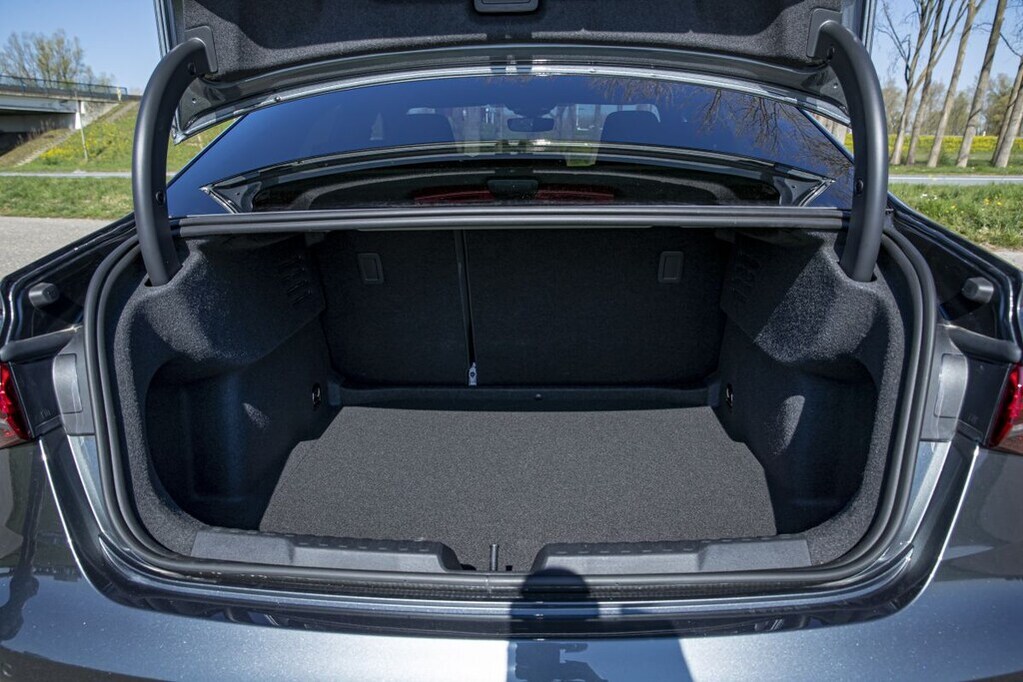
Audi A3
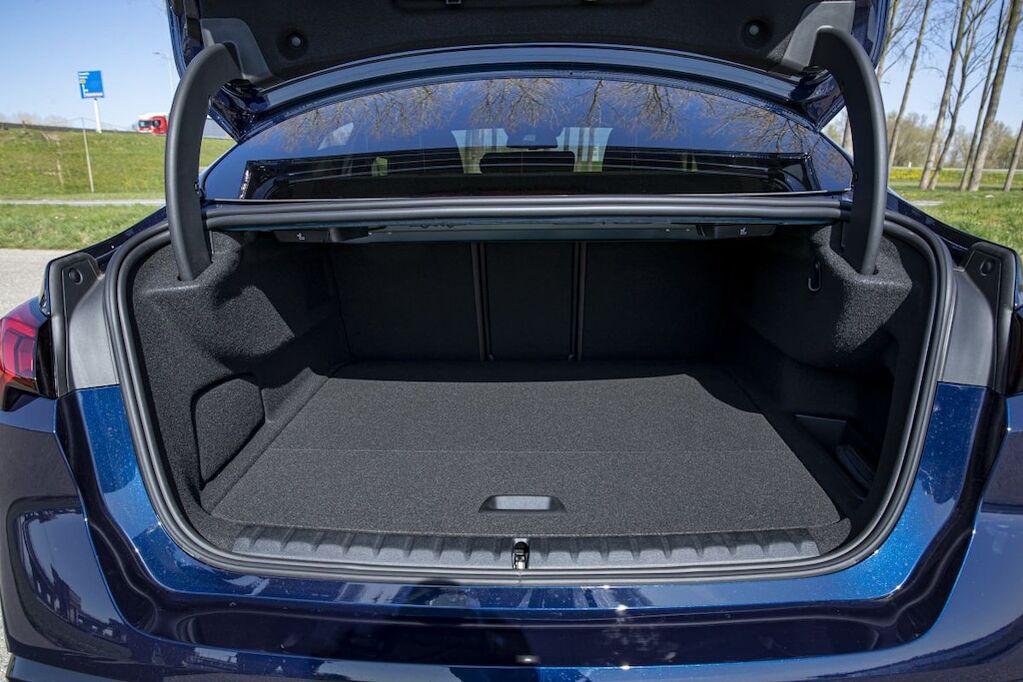
BMW 2-series Gran Coupe
In principle, the BMW powertrain is quite similar to that of Audi, and yet there are some differences. To begin with, you notice that there is one less cylinder bouncing up and down. This results in somewhat different vibrations and a different sound than with Audi. Fortunately, the enormous shaking that the 1.5 used to do has now disappeared. However, when you floor the accelerator, you can still hear the three-cylinder working quite emphatically. Of course, that doesn’t have to be a disadvantage. Just like with Audi, the starter motor can also support the 1.5 here. However, this happens with a little more decisiveness and so the maximum power in the BMW is more than the combustion engine alone could offer.
In total there is 170 hp and 280 Nm available, while the 1.5 peaks at 156 hp and 240 Nm. It makes the BMW slightly faster on the stopwatch, although it is a difference in the margin. It is striking that the consumption meter in the BMW sometimes falls back to barely credible values of 1 in 25 or even more economical on the highway. Unfortunately, in practice it is not such a party. With 1 in 19.1, the petrol consumption comes out neatly around the WLTP promise and the 2 Series is not even that much less economical than the A3. Just like in the Audi, the gearbox likes to keep the revs low and usually shifts unnoticed, in this area the two are very close to each other.
BMW 220 Gran Coupe Sportier Than Audi A3 Limousine
You will find a bigger difference in the chassis, with the BMW coming across as decidedly sporty. Perhaps a little too pronounced, because although the dampers feel solid, you almost shake out of your sports seat on poor road surfaces. On paper, the chassis is adaptive, but in practice you cannot adjust anything yourself and under all circumstances it all feels very firm. This also has its advantages, because on slippery road surfaces the road holding of the BMW is of a very high level. The steering works with nice counter pressure and the rear feels pleasantly maneuverable without becoming tricky or nervous. You can really go wild with the 2 Series, without it being scary for a moment and because the chassis communicates well with you, that also gives real driving pleasure. Of course: a traditional rear-wheel drive BMW feels even better, but you certainly don’t feel shortchanged.
Audi also mounts a sports suspension under the A3 S-Line, but in practice that is much less sporty. As is often the case with the brand, everything works with a lot of power, creating a barrier between yourself and the technology. The steering is also less direct and the chassis is set up more safely, so there is simply not as much fun to be had from taking corners harder. However, that does not mean that the A3 drives badly, on the contrary. There is much more comfort, more than enough reserve and as a whole it all quickly feels familiar.

Audi A3
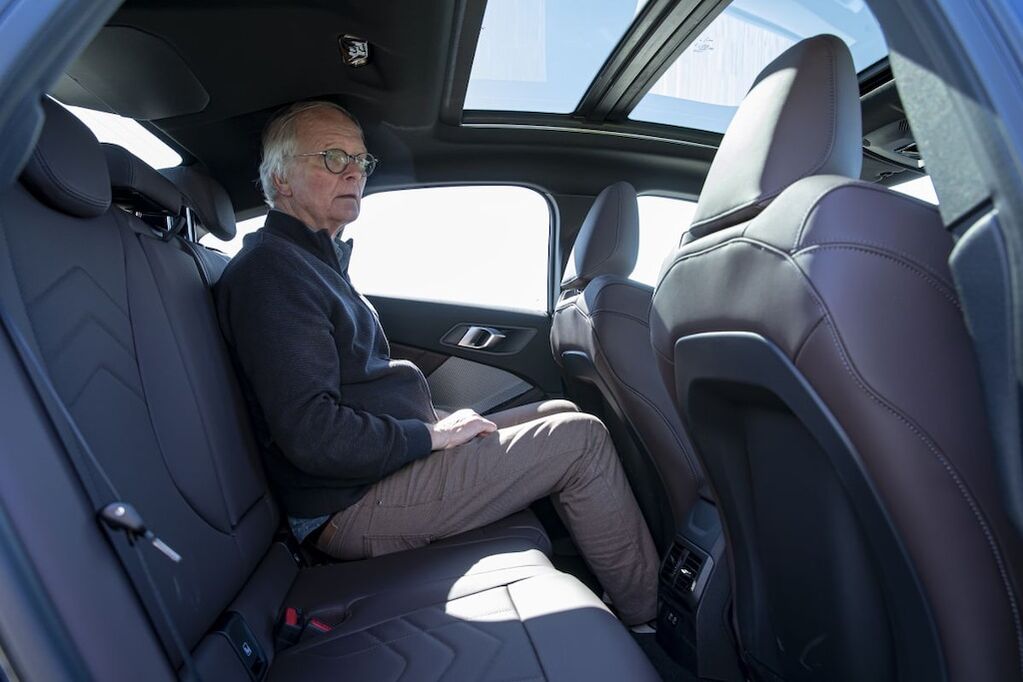
Audi and BMW Abound in Options
Of course you don’t get that sports suspension for free, because Audi is a real premium brand. If you want it to be a bit luxurious, you have to tick quite a few boxes on the options list. For example, the already hefty starting price of €48,490 quickly rises to €53,997. That is slightly less expensive than the BMW, but you do miss quite a bit of equipment. Compared to the BMW, for example, you have to do without a head-up display, electric seat adjustment, adaptive shock absorbers and seat and steering wheel heating. Furthermore, not all active driving assistance systems are present, for example you have to do without a blind spot sensor.
Then that €55,100 for the BMW suddenly feels quite reasonable, although that is mainly very relative. You get a fully equipped car in return and BMW is noticeably further ahead in the field of active driving assistance systems. This can be a very pleasant side effect in traffic jams. Unless you prefer to drive yourself, of course, but that is another matter of principle.
